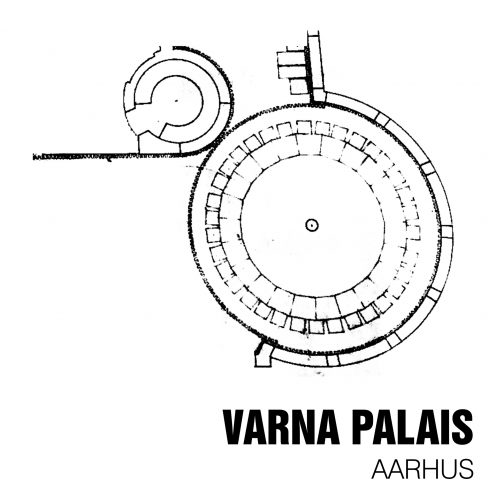
Varna Palais, 1971
Verner Panton never limited himself only to the order of single objects, but put them always in a context, incorporated the whole space with his creation. The best example: the Varna Palace in Arhus/Denmark in which a restaurant was accommodated. Guest space, way, society halls, toilets – all rooms of the classical building found out an elementary transformation in 1971.
Geometrical patterns, combined with colours and forms stamped the impressive interior and put on Panton’s significant stamp to the palace of 1909. With curtains and carpet of the company Mira-X from the Decor I collection, to the so-called Mira-X Set, he formed the walk. Besides, he dressed up the complete walls with the curtains on which the Curve Design was printed. Ground and cover were provided with a carpet in the same optic what increased the depth of the hall terrifically. From the ceiling in to these colours coordinated Ball lights hung deeply down; just in such a way that also tall guests could move comfortably under it.
In the rest rooms parts of the walls and ceiling had been provided with Ring Lamps. Mirror walls increased the colour effect. Also in the chrome-coloured washstands the light was reflected.
Tuned on psychedelic effects of his creation Verner Panton put on unquestionably the crown by the ambience of the restaurant. Coloured foamed plastic balls, in between Spiral SP1 pendulum lights, violet-coloured columns, carpets and curtains with the Decor I in the variation of Circles, in addition chrome-coloured Pantonova Chairs from Fritz Hansen – the use of colours and forms was virtually inflationary.
In contrast to the primarily violet colour of the restaurant, Verner Panton formed the Rotonde red. A central element in the so-called Red Hall were red foamed plastic balls which hung from the ceiling. By their arrangement they seemed to move on to the column standing in the middle of the space. The Flowerpot lights placed in between were arranged also perfectly circular. Below rectangular plastic tables, equipped with the Panton Chair, in red als well, formed groups.
Panton’s lights and pieces of furniture which seem to be created for perfect relaxation by body and mind performed a good job in the lounge. Countless Flowerpot lights formed two spirals. The circular living-room furnitures placed under it created separées. In spite of their open arrangement in the space, they guaranteed rest and seclusion. In another area one sat down in the Living Tower. With a digestif one looked at the light play of a Spiral SP3 light, Panton’s image of a chandelier which reminded in a waterfall full off light.
The piece of art the cult designer created two kilometres in front off the gates of Arhus excited over the borders of Denmark. The Varna Palace in the Marselisborg wood, at that time (1909) within the scope of a national industrial exhibition, craft exhibition and cultural exhibition built, was named to the Bulgarian city of Varna. In 1971 the municipality disposed the restaurant to the Odd Fellow Orders which allowed to renovate the rooms by Verner Panton. Recently the Palace has been renovated once more. The nicest rooms of the town with offer place for up to 500 people, embedded in a park by the sea, have remained – Panton’s style, nevertheless, had to give way.












